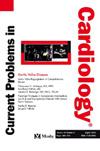The dual functionality of EZH2 in cardiovascular disease: Bridging cancer biology and cardiac pathophysiology through epigenetic regulation, metabolic reprogramming, and novel therapeutic interventions
IF 3.3
3区 医学
Q2 CARDIAC & CARDIOVASCULAR SYSTEMS
引用次数: 0
Abstract
Enhancer of zeste homolog 2 (EZH2), canonically recognized as an oncogenic driver through its histone methyltransferase activity, has emerged as a critical epigenetic orchestrator in cardiovascular pathophysiology with unexpected functional complexity. While extensive oncological research has established EZH2′s role in facilitating the Warburg effect and metabolic reprogramming in cancer cells, recent cardiovascular investigations reveal that EZH2 employs remarkably parallel mechanisms to coordinate the metabolic shift from oxidative phosphorylation to glycolysis during cardiac ischemia—a previously unrecognized molecular paradigm bridging cancer biology and cardiovascular pathophysiology. This review synthesizes emerging evidence demonstrating EZH2′s unique context-dependent functionality in cardiac tissue, acting simultaneously as a transcriptional co-activator through non-canonical FOXM1 interaction and as an epigenetic repressor via its canonical PRC2-mediated H3K27 trimethylation activity. Most significantly, we highlight the novel discovery that EZH2 establishes a distinctive methylation landscape in ischemic cardiomyopathy through direct interaction with DNA methyltransferases, creating a molecular signature that suppresses cardioprotective factors like KLF15 while enhancing matrix metalloproteinase expression that drives adverse cardiac remodeling. Despite compelling preclinical evidence supporting EZH2 inhibition across multiple cardiovascular conditions, including atherosclerosis, cardiac hypertrophy, and myocardial fibrosis, a critical translational gap persists due to delivery limitations, potential off-target effects, and inadequate understanding of EZH2′s temporal and tissue-specific functions. This review identifies crucial research opportunities, including developing cardiac-specific EZH2 modulators, exploring combination therapies targeting downstream pathways, and comprehensive interactome mapping to reveal cardiovascular-specific interactions. Decoding the complex regulatory networks governed by EZH2 across developmental stages and disease contexts represents a frontier for developing innovative epigenetic interventions addressing the global burden of cardiovascular disease.
EZH2在心血管疾病中的双重功能:通过表观遗传调控、代谢重编程和新的治疗干预,架起癌症生物学和心脏病理生理学的桥梁。
zeste同源物2的增强子(EZH2),通常被认为是通过其组蛋白甲基转移酶活性的致癌驱动因子,已成为心血管病理生理中具有意想不到的功能复杂性的关键表观遗传调控因子。虽然广泛的肿瘤学研究已经确立了EZH2在促进癌细胞Warburg效应和代谢重编程中的作用,但最近的心血管研究表明,EZH2采用非常相似的机制来协调心脏缺血期间从氧化磷酸化到糖酵解的代谢转变——这是一个以前未被认识的连接癌症生物学和心血管病理生理学的分子范式。本综述综合了新出现的证据,证明EZH2在心脏组织中具有独特的上下文依赖功能,通过非规范的FOXM1相互作用同时作为转录共激活因子,并通过其规范的prc2介导的H3K27三甲基化活性同时作为表观遗传抑制因子。最重要的是,我们强调了新的发现,EZH2通过与DNA甲基转移酶的直接相互作用,在缺血性心肌病中建立了独特的甲基化景观,产生了抑制心脏保护因子如KLF15的分子特征,同时增强了驱动不良心脏重构的基质金属蛋白酶的表达。尽管有令人信服的临床前证据支持EZH2对多种心血管疾病的抑制作用,包括动脉粥样硬化、心脏肥大和心肌纤维化,但由于递送限制、潜在的脱靶效应以及对EZH2的时间和组织特异性功能的了解不足,关键的翻译缺口仍然存在。本综述确定了关键的研究机会,包括开发心脏特异性EZH2调节剂,探索针对下游途径的联合疗法,以及全面的相互作用组制图以揭示心血管特异性相互作用。破解由EZH2在发育阶段和疾病背景下控制的复杂调控网络,为开发创新的表观遗传干预措施解决全球心血管疾病负担提供了前沿。
本文章由计算机程序翻译,如有差异,请以英文原文为准。
求助全文
约1分钟内获得全文
求助全文
来源期刊

Current Problems in Cardiology
医学-心血管系统
CiteScore
4.80
自引率
2.40%
发文量
392
审稿时长
6 days
期刊介绍:
Under the editorial leadership of noted cardiologist Dr. Hector O. Ventura, Current Problems in Cardiology provides focused, comprehensive coverage of important clinical topics in cardiology. Each monthly issues, addresses a selected clinical problem or condition, including pathophysiology, invasive and noninvasive diagnosis, drug therapy, surgical management, and rehabilitation; or explores the clinical applications of a diagnostic modality or a particular category of drugs. Critical commentary from the distinguished editorial board accompanies each monograph, providing readers with additional insights. An extensive bibliography in each issue saves hours of library research.
 求助内容:
求助内容: 应助结果提醒方式:
应助结果提醒方式:


